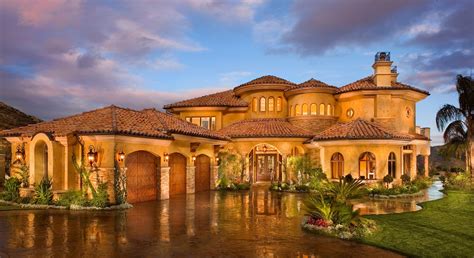As the world grapples with the challenges of climate change, energy efficiency has become a critical consideration in building design. One approach that has gained significant attention in recent years is Passive House design, a methodology that focuses on creating buildings that are highly energy-efficient, comfortable, and sustainable. In this article, we will delve into the principles of Passive House design and provide 10 tips to help you save energy and create a more environmentally friendly building.
Understanding Passive House Design
Before we dive into the tips, it’s essential to understand the core principles of Passive House design. The term “Passive House” refers to a building that is designed and constructed to be highly energy-efficient, using minimal amounts of energy for heating, cooling, and lighting. This is achieved through a combination of careful design, high-performance materials, and advanced construction techniques.
10 Passive House Design Tips
1. Optimize Your Building’s Orientation
The orientation of your building can have a significant impact on its energy efficiency. By carefully planning the orientation of your building, you can maximize natural light and heat gain during the winter months, while minimizing it during the summer. This can be achieved by orienting the building to face the sun, using techniques such as overhangs and shading devices to control the amount of sunlight that enters the building.
2. Use High-Performance Insulation
Insulation is a critical component of Passive House design, as it helps to reduce heat loss and gain. High-performance insulation materials, such as foam board insulation and fiberglass batts, can be used to achieve high levels of thermal resistance. It’s also essential to ensure that the insulation is properly installed, with minimal gaps or voids that can compromise its effectiveness.
3. Install High-Performance Windows
Windows are a significant source of heat loss and gain in buildings, which is why high-performance windows are a critical component of Passive House design. Look for windows with low U-factors (which measure the rate of heat transfer) and high solar heat gain coefficients (which measure the amount of solar radiation that enters the building). It’s also essential to consider the orientation and size of the windows, as well as the use of shading devices to control the amount of sunlight that enters the building.
4. Use Airtight Construction Techniques
Airtight construction is critical in Passive House design, as it helps to prevent heat loss and gain through gaps and cracks in the building envelope. This can be achieved using techniques such as sealing gaps and cracks with caulk and spray foam, and using airtight materials such as plywood and oriented strand board (OSB).
5. Install a Heat Recovery Ventilation System
A heat recovery ventilation system is a critical component of Passive House design, as it helps to recover heat from exhaust air and transfer it to fresh air. This can be achieved using a heat recovery ventilation system, which consists of a heat exchanger and a ventilation system. The heat exchanger transfers heat from the exhaust air to the fresh air, while the ventilation system provides a constant supply of fresh air to the building.
6. Use Renewable Energy Sources
Renewable energy sources, such as solar and wind power, can be used to reduce the building’s reliance on non-renewable energy sources. This can be achieved by installing solar panels or wind turbines on the building, or by purchasing renewable energy credits from a utility company.
7. Optimize Your Building’s Form and Layout
The form and layout of your building can have a significant impact on its energy efficiency. By optimizing the building’s form and layout, you can reduce the amount of energy required for heating, cooling, and lighting. This can be achieved by using techniques such as building orientation, window placement, and interior layout.
8. Use Energy-Efficient Appliances and Lighting
Energy-efficient appliances and lighting can help to reduce the building’s energy consumption. Look for appliances and lighting with high Energy Star ratings, which indicate that they meet energy efficiency standards set by the U.S. Environmental Protection Agency.
9. Install a Rainwater Harvesting System
A rainwater harvesting system can help to reduce the building’s water consumption by collecting and storing rainwater for non-potable uses such as flushing toilets and washing clothes. This can be achieved by installing a rainwater harvesting system, which consists of a roof catchment, a storage tank, and a treatment system.
10. Monitor and Evaluate Your Building’s Performance
Finally, it’s essential to monitor and evaluate your building’s performance to ensure that it is meeting its energy efficiency goals. This can be achieved by installing energy monitoring systems, which track the building’s energy consumption and provide data on its performance. This data can be used to identify areas for improvement and optimize the building’s energy efficiency over time.
FAQ Section
What is Passive House design?
+Passive House design is a methodology that focuses on creating buildings that are highly energy-efficient, comfortable, and sustainable. It involves careful design, high-performance materials, and advanced construction techniques to minimize energy consumption and reduce environmental impact.
What are the benefits of Passive House design?
+The benefits of Passive House design include reduced energy consumption, increased comfort, and improved indoor air quality. It also provides a sustainable and environmentally friendly approach to building design, which can help to reduce greenhouse gas emissions and mitigate climate change.
How can I get started with Passive House design?
+To get started with Passive House design, it's essential to work with a qualified architect or builder who has experience with Passive House design. You can also start by learning more about the principles of Passive House design and exploring resources such as the Passive House Institute and the International Passive House Association.
By following these 10 Passive House design tips and considering the principles of energy efficiency, comfort, and sustainability, you can create a building that not only reduces its environmental impact but also provides a healthy, comfortable, and productive indoor environment for its occupants. Remember to always consider the specific needs and goals of your project, and don’t hesitate to consult with experts in the field to ensure that your building meets the highest standards of energy efficiency and sustainability.

